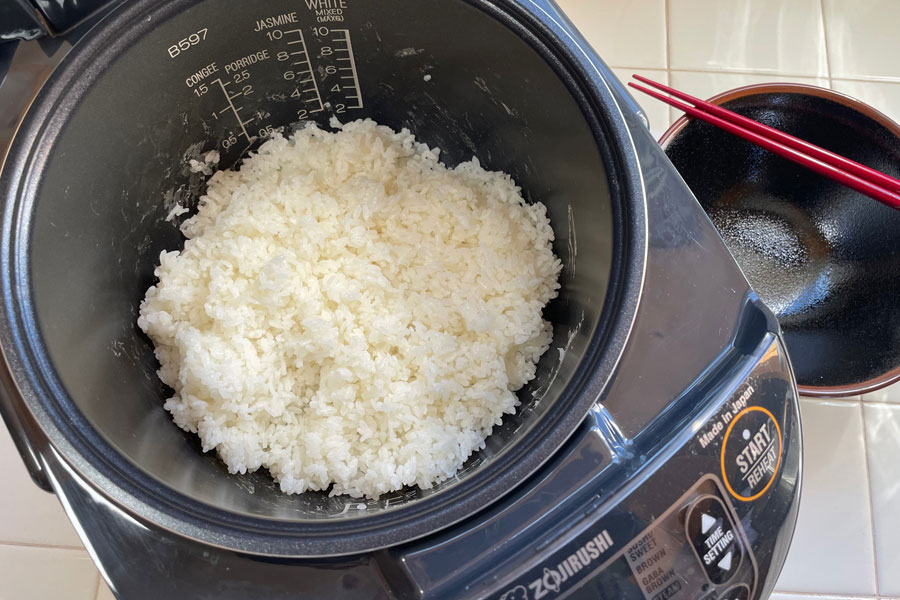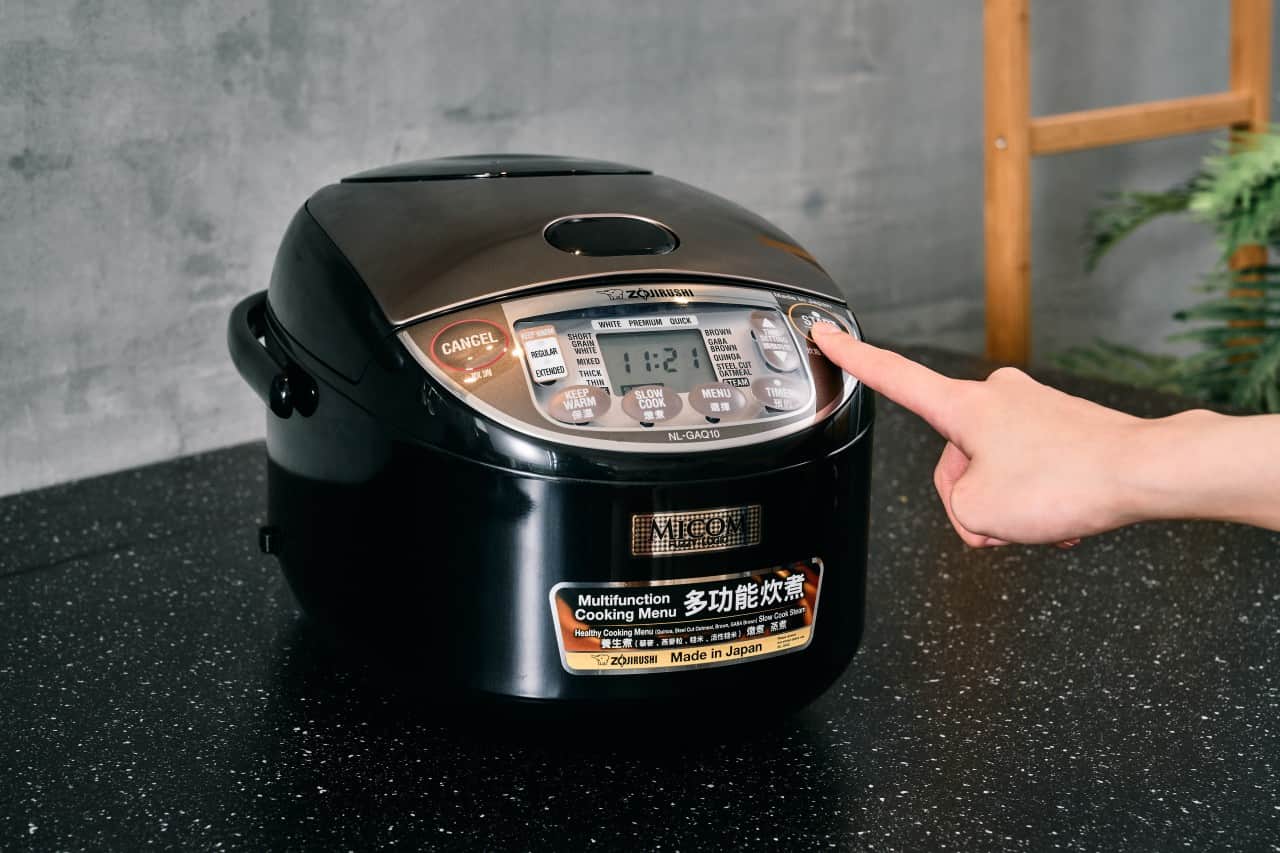Mastering the Art of Sushi: How to Cook Sushi Rice in a Zojirushi Rice Cooker
Written By James Morgan
Introduction: Discover the Perfect Sushi Rice
Creating the perfect sushi starts with the rice. A key component that can make or break your sushi experience is the consistency and flavor of the rice. In this detailed guide, we'll walk you through how to cook sushi rice in a Zojirushi Rice Cooker, ensuring you achieve restaurant-quality results in the comfort of your home. Cooking sushi rice may seem daunting, but when done right, it can elevate your homemade sushi to an entirely new level. By following this step-by-step guide, you'll master the art of sushi rice and impress your family and friends with your culinary skills.
:max_bytes(150000):strip_icc()/Zojirushi-NP-HCC10XH-Rice-Cooker-3-7f64ed8bca85495a8f5d25ebd483d109.jpg)
Why Use a Zojirushi Rice Cooker for Sushi Rice?
The Zojirushi Rice Cooker is a kitchen marvel, especially when it comes to making sushi rice. Renowned for its precision and consistency, this rice cooker takes the guesswork out of cooking. It ensures that each grain of sushi rice is perfectly cooked, fluffy, and suitably sticky the ideal texture for sushi. The advanced technology in Zojirushi Rice Cookers includes features such as multiple cooking settings, uniform heat distribution, and pressure cooking, which replicate the traditional Japanese methods of cooking sushi rice, but with much more ease and efficiency.
The Importance of Quality Ingredients
Before diving into the rice cooking process, it's crucial to talk about the quality of ingredients. The star of the show is, of course, the rice. Opt for short-grain Japanese rice, as its higher starch content makes it sticky and plump, perfect for sushi. Avoid using long-grain or other types of rice, as they do not provide the necessary texture. Also, ensure you use high-quality rice vinegar, sugar, and salt to season your rice. These ingredients balance the flavor and enhance the natural sweetness of the rice, making your sushi irresistible.
Ingredients: What You'll Need
- 2 cups of short-grain Japanese rice
- 2 1/2 cups of water
- 1/2 cup of rice vinegar
- 2 tablespoons of sugar
- 1 1/2 teaspoons of salt
- Zojirushi Rice Cooker
- Japanese Knife Set
- Cutting Board

Step-by-Step Guide to Cooking Sushi Rice
Now that you have your ingredients ready, let's delve into how to cook sushi rice in a Zojirushi Rice Cooker. While the process itself isn't overly complex, paying attention to each step ensures the best possible outcome. Follow this guide to achieve perfect sushi rice every time:
Step 1: Rinse the Rice
The first step to achieving great sushi rice is properly rinsing the grains. Place the rice in a large bowl and cover it with cold water. Using your hands, gently stir the rice in a circular motion, making sure to wash off any excess starch. The water will become cloudy. Drain this water and repeat the process 3-4 times until the water runs clear. This step is crucial as it removes the surface starch, preventing the rice from becoming too sticky and creating a more desirable texture.
Step 2: Soak the Rice
After rinsing, let the rice soak in water for about 30 minutes. This hydration step allows the grains to absorb water evenly, ensuring uniform cooking. Place the rinsed rice in the Zojirushi Rice Cooker bowl and add the required amount of water. For our recipe, that means adding 2 1/2 cups of water to 2 cups of rinsed rice. Let the rice soak in the cooker for the specified time before starting the cooking process.
Step 3: Cook the Rice
Once the rice has soaked, it's time to cook it. Close the lid of your Zojirushi Rice Cooker and select the Sushi Rice setting. If your model does not have this specific setting, the 'White Rice' setting will suffice. The advanced technology in this rice cooker ensures even heat distribution and optimal steaming, mimicking traditional cooking methods with modern convenience. Let the rice cooker handle the process. It will beep or signal when the rice is perfectly cooked.
Step 4: Prepare the Sushi Vinegar
While the rice cooks, prepare the sushi vinegar mixture. In a small saucepan, combine 1/2 cup of rice vinegar, 2 tablespoons of sugar, and 1 1/2 teaspoons of salt. Warm the mixture over medium heat until the sugar and salt are completely dissolved. Do not let it boil. Once dissolved, remove it from the heat and let it cool. This mixture will be used to season the rice, giving it the characteristic tangy and slightly sweet flavor essential for sushi.
Step 5: Season the Rice
Once the rice cooker signals that the rice is done, remove the pot and let it sit for about 10 minutes. Then, transfer the rice to a large bowl, preferably wooden, to help absorb any excess moisture. Using a paddle or wooden spatula, gently cut through the rice at a 45-degree angle to break it up and cool it slightly. Gradually add the prepared vinegar mixture, gently folding the rice with the paddle. Avoid mashing or stirring vigorously; the goal is to coat the grains without crushing them. This step is crucial for achieving the perfect texture and flavor of sushi rice.
Step 6: Let the Rice Cool
After seasoning, let the rice cool to room temperature. Spread it out evenly in the bowl to allow it to cool evenly. You can use a fan to speed up the cooling process, which can also give the rice a glossy finish. Avoid placing it in the refrigerator, as this can make the rice hard and lose its stickiness. Proper cooling is essential to maintain the rice's delicate texture and keep it ready for sushi preparation.
FAQs About Cooking Sushi Rice in a Zojirushi Rice Cooker

Can I Use Other Types of Rice?
While it is possible to use other types of rice, such as jasmine or basmati, it is not recommended for sushi. These types of rice do not have the same starch content as short-grain Japanese rice, which is crucial for creating the sticky texture needed for sushi. They also don't absorb the sushi vinegar mixture as well, resulting in a less authentic flavor. For the best results, always use short-grain Japanese rice when making sushi.
:max_bytes(150000):strip_icc()/Zojirushi-NP-HCC10XH-Rice-Cooker-3-7f64ed8bca85495a8f5d25ebd483d109.jpg)
Why Is My Sushi Rice Too Sticky or Mushy?
Several factors can cause sushi rice to become overly sticky or mushy. One common issue is not rinsing the rice thoroughly enough, leaving excess starch that can make the rice gluey. Over-soaking the rice or using too much water during cooking can also result in a mushy texture. Additionally, improper seasoning or using an incorrect ratio of vinegar mixture can contribute to these issues. Following the steps carefully and using the right ingredients will help you avoid these common pitfalls.
How Long Can I Store Sushi Rice?
Sushi rice is best consumed fresh for optimal taste and texture. If you need to store it, keep it at room temperature for up to 4-6 hours, covered with a damp cloth to prevent it from drying out. Do not refrigerate, as cold temperatures can alter the texture and make the rice hard. If you must store leftover sushi rice, it's best to use it within a day and reheat it gently before use, though it won't be as perfect as freshly made rice.
Final Thoughts: Elevate Your Sushi Game
Learning how to cook sushi rice in a Zojirushi Rice Cooker can significantly enhance your sushi-making experience. The precision and consistency offered by this appliance ensure that you achieve perfect sushi rice every time. Remember, the quality of ingredients and attention to detail in each step are key to creating sushi rice that is both delicious and authentic. By following this comprehensive guide, you'll not only improve your culinary skills but also bring the exquisite taste of Japanese sushi into your home.
Additional Resources
For more information on the Zojirushi Rice Cooker and other essential sushi-making tools, check out these resources:
As an Amazon Associate, I earn from qualifying purchases.



